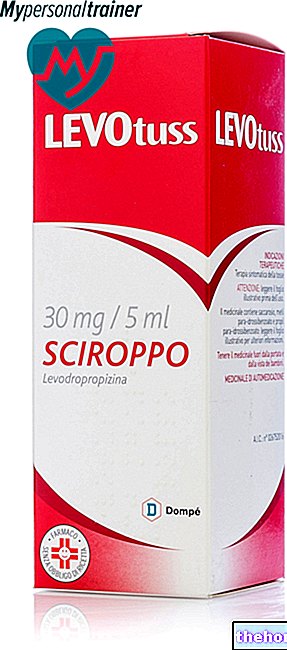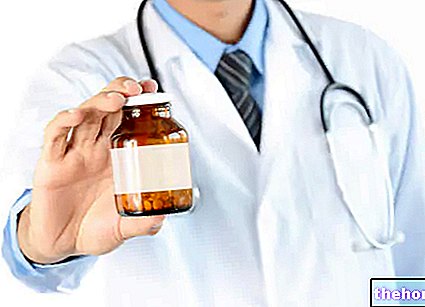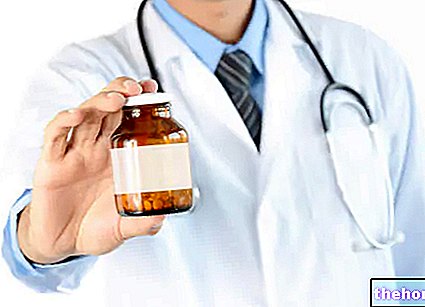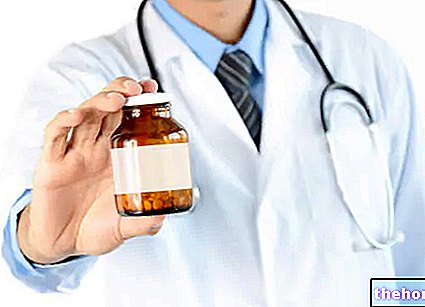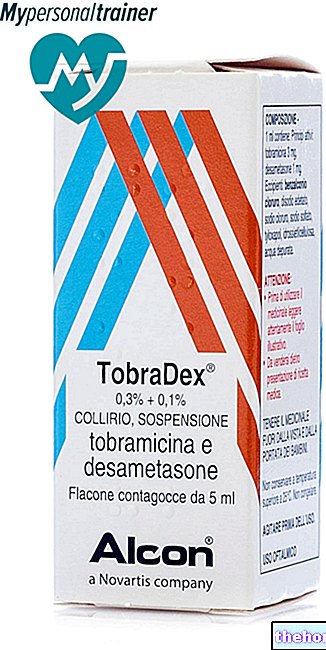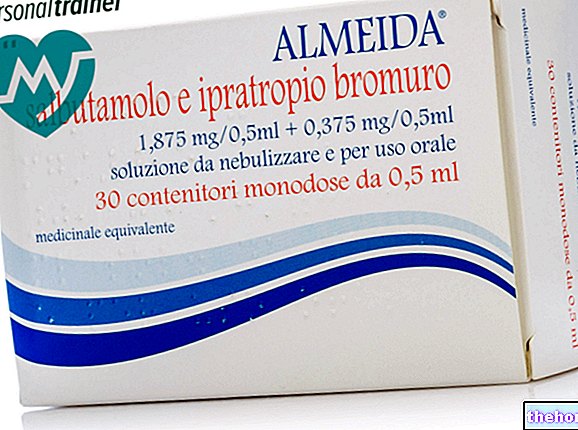Active ingredients: Sodium picosulfate
GUTTALAX 2.5 mg soft capsules
Guttalax package inserts are available for pack sizes:- GUTTALAX 2.5 mg soft capsules
- GUTTALAX 7.5 mg / ml oral drops, solution
Indications Why is Guttalax used? What is it for?
WHAT IS IT
Guttalax 2.5 mg soft capsules is a contact laxative.
WHY IT IS USED
Guttalax 2.5 mg soft capsules are used for the short-term treatment of occasional constipation.
Contraindications When Guttalax should not be used
Guttalax is contraindicated in patients with:
- hypersensitivity to the active substance (sodium picosulfate) or to any of the excipients,
- paralytic ileus or intestinal or biliary obstruction or stricture,
- acute severe painful and / or febrile abdominal conditions (such as appendicitis) associated with nausea and vomiting,
- severe state of dehydration,
- nausea or vomiting,
- acute inflammation of the gastrointestinal tract,
- rectal bleeding of unknown origin,
- gallstones,
- liver failure,
- pregnancy and breastfeeding (see "What to do during pregnancy and" breastfeeding ").
Do not use in children under 4 years of age.
Precautions for use What you need to know before taking Guttalax
In children between 4 and 12 years of age, the medicine can only be used after consulting your doctor. For children under 4 years of age use Guttalax drops. The treatment of chronic or recurrent constipation always requires the intervention of the doctor for diagnosis, prescription of drugs and surveillance during the course of therapy.
Consult your doctor when the need for the laxative derives from a sudden change in previous bowel habits (frequency and characteristics of bowel movements) that lasted for more than two weeks or when the use of the laxative fails to produce effects. It is also advisable that the subjects elderly or in poor health conditions consult your doctor before using the medicine.
Like other laxatives, Guttalax 2.5 mg soft capsules should not be taken daily for prolonged periods of time. If the use of laxative is necessary every day, the cause of constipation should be identified.
Interactions Which drugs or foods can modify the effect of Guttalax
Tell your doctor or pharmacist if you have recently taken any other medicines, even those without a prescription.
Laxatives can reduce the time spent in the intestine and therefore the absorption of other drugs administered simultaneously orally. Therefore, avoid ingesting laxatives and other drugs at the same time: after taking a medicine, leave an interval of at least 2 hours before taking the laxative.
Milk or antacids can change the effect of the medicine; leave an interval of at least 1 hour before taking the laxative.
Continued use of Guttalax 2.5 mg soft capsules may increase patient response to oral anticoagulants and alter glucose tolerance. Concomitant use of diuretics or adrenocorticosteroids and excessive doses of Guttalax 2.5 mg soft capsules may result in an increased risk of electrolyte imbalance. This imbalance, in turn, can lead to an increase in sensitivity to cardiac glycosides.
Concomitant administration of antibiotics may reduce the laxative effect of Guttalax.
Warnings It is important to know that:
Like all laxatives, Guttalax should not be taken continuously or for long periods of time without investigating the cause of the constipation. Prolonged and excessive use can lead to diarrhea, electrolyte imbalance and hypokalemia.
Cases of dizziness and / or syncope have been reported in patients taking Guttalax. The available data on these cases suggest that the events could be related to defecation syncope (or syncope attributable to evacuative effort), or to a vasovagal response to abdominal pain related to constipation, and not necessarily to the intake of sodium picosulfate itself.
The abuse of laxatives (frequent or prolonged use or with excessive doses) can cause persistent diarrhea with consequent loss of water, mineral salts (especially potassium) and other essential nutritional factors. In the most serious cases it is possible the onset of dehydration or hypokalemia , which can cause cardiac or neuromuscular dysfunction, especially in the case of simultaneous treatment with cardiac glycosides, diuretics or corticosteroids.
The abuse of laxatives, especially contact laxatives (stimulant laxatives), can cause addiction (and, therefore, the possible need to gradually increase the dosage), chronic constipation and loss of normal intestinal functions (intestinal atony).
Health education notes
First of all it must be borne in mind that, in most cases, a balanced diet rich in water and fiber (bran, vegetables and fruit) can permanently solve the problem of constipation.
Many people think they suffer from constipation if they fail to evacuate every day. This is a mistaken belief as this situation is completely normal for a large number of individuals. Consider, instead, that constipation occurs when the bowel movements are reduced compared to your personal habits and are associated with the emission of hard stools. If the episodes of constipation occur repeatedly, the doctor must be consulted.
When it can be used only after consulting your doctor
Pregnancy and breastfeeding (see "What to do during pregnancy and" breastfeeding ").
Pediatrics (see "Precautions for use").
It is also advisable to consult the doctor in cases of repeated episodes of constipation (more than three to four per month).
What to do during pregnancy and breastfeeding
Ask your doctor or pharmacist for advice before taking any medicine.
Consult your doctor if you suspect pregnancy or wish to plan a maternity leave.
Pregnancy
There are no adequate and well-controlled studies on the use of the drug in pregnancy. Long experience has shown no evidence of undesirable or harmful effects during pregnancy.Although no toxic effects have ever been reported during pregnancy, the medicine should only be used in case of need, under the direct supervision of the doctor, after evaluating the expected benefit to the mother in relation to the possible risk to the fetus.
Feeding time
Clinical data show that the active fraction of sodium picosulfate and its glucuronic derivatives are not excreted, in determinable quantities, in breast milk. However, the medicine should only be used in case of need, under the direct supervision of the doctor, after evaluating the expected benefit to the mother in relation to the possible risk to the infant.
Fertility
No studies have been conducted to evaluate the effects on human fertility. Non-clinical studies revealed no effect on fertility.
Effects on ability to drive and use machines
As no specific studies have been performed, there are no known inhibitory effects of Guttalax that could affect the ability to drive and use machines.
However, patients should be advised that dizziness and / or syncope may occur due to the vasovagal response (resulting from, for example, abdominal spasm). If patients experience abdominal spasm they should avoid potentially hazardous activities such as driving or operating machinery.
Dosage and method of use How to use Guttalax: Dosage
How many
Adults
Adults: 2-3 soft capsules (5-7.5 mg) per day.
Use in children and adolescents
Children over 10 years: 2-3 soft capsules (5-7.5 mg) per day.
Children between 4 and 10 years: 1 soft capsule per day (2.5 mg) per day.
Guttalax soft capsules are not recommended for children under 4 years of age. For children under 4 years of age use Guttalax in drops.
Warning: do not exceed the indicated doses without medical advice.
It is advisable to initially use the minimum doses provided.
The correct dose is the minimum sufficient to produce an easy evacuation of soft stools.
When necessary, the dose can then be increased, but without ever exceeding the maximum indicated.
When and for how long
Soft capsules should preferably be taken in the evening to evacuate the next morning. Laxatives should be used as infrequently as possible and for no more than seven days. The use for longer periods of time requires a doctor's prescription after proper evaluation of the individual case. Consult your doctor if the disorder occurs repeatedly or if you have noticed any recent change in its characteristics.
Like
Swallow with an adequate amount of water (a large glass). A diet rich in liquids promotes the effect of the medicine.
Overdose What to do if you have taken too much Guttalax
Signs and symptoms
Following the intake of high doses of the drug, watery stools (diarrhea), abdominal cramps and a significant loss of fluids, potassium and other electrolytes may occur.
Cases of colonic mucosal ischaemia have been reported with doses of Guttalax considerably higher than the recommended dosage for the treatment of occasional constipation.
Overdose of laxatives is known to cause chronic diarrhea, abdominal pain, hypokalemia, secondary aldosteronism and kidney stones.
In association with chronic laxative abuse, renal tubular injury, metabolic alkalosis and muscle weakness secondary to hypokalaemia have also been described.
See also the information in the "It's important to know" section about laxative abuse.
Treatment
If action is taken within a short time after ingestion of Guttalax 2.5 mg soft capsules, absorption can be reduced or avoided by induction of vomiting or gastric lavage. Fluid and electrolyte losses must be replaced. This is particularly the case. important in the elderly and in the young.
The administration of spasmolytics may be useful.
In case of accidental ingestion / intake of an excessive dose of Guttalax 2.5 mg soft capsules, notify your doctor immediately or go to the nearest hospital.
If you have any questions about the use of Guttalax, ask your doctor or pharmacist.
Side Effects What are the side effects of Guttalax
Like all medicines, Guttalax can cause side effects, although not everybody gets them.
Adverse reactions are listed below by system organ class and frequency, according to the following categories:
Very common ≥ 1/10
Common ≥ 1/100,
Uncommon ≥ 1 / 1,000,
Rare ≥ 1 / 10,000,
Very rare
Not known frequency cannot be estimated from the available data.
Immune system disorders:
Not known *: hypersensitivity.
Nervous system disorders:
Uncommon: dizziness.
Not known *: syncope.
Cases of dizziness and syncope that occur after sodium picosulfate intake appear to be attributable to a vasovagal response (resulting, for example, from abdominal pain or stool evacuation).
Gastrointestinal disorders:
Very common: diarrhea.
Common: abdominal cramps, abdominal pain and abdominal discomfort. Uncommon: vomiting, nausea.
Occasionally: isolated cramping pains or abdominal colic, more frequent in cases of severe constipation.
Skin and subcutaneous tissue disorders
Not known *: skin reactions such as angioedema, rash on taking the medicine, rash, pruritus.
* These adverse reactions were observed in post-marketing experience. At 95% probability, the frequency category is not greater than uncommon, but may be lower. An accurate estimate of the frequency is not possible since these reactions adverse events did not occur in 1020 patients in clinical trials.
Compliance with the instructions contained in the package leaflet reduces the risk of undesirable effects.
These side effects are usually transient. However, when they occur, it is advisable to consult your doctor or pharmacist.
"Reporting of side effects"
If you get any side effects, including any side effects not listed in this leaflet, contact your doctor or pharmacist. Side effects can also be reported directly via the national reporting system at https://www.aifa.gov. en / content / adverse-reaction-reports ". By reporting side effects you can help provide more information on the safety of this medicine."
Expiry and Retention
Expiry: see the expiry date indicated on the package.
The expiry date refers to the product in intact packaging, correctly stored. Warning: do not use the medicine after the expiry date indicated on the package.
Medicines should not be disposed of via wastewater or household waste. Ask your pharmacist how to dispose of medicines you no longer use. This will help protect the environment.
It is important to always have the information about the medicine available, so keep both the box and the package leaflet.
Keep this medicine out of the reach and sight of children.
Composition and pharmaceutical form
COMPOSITION
1 soft capsule contains: active ingredient: sodium picosulfate 2.5 mg.
Excipients: macrogol 400, propylene glycol, purified water, gelatin, glycerol.
HOW IT LOOKS
Guttalax 2.5 mg soft capsules come in the form of round-format soft gelatin capsules for oral use.
The contents of the package are 30 soft capsules.
Source Package Leaflet: AIFA (Italian Medicines Agency). Content published in January 2016. The information present may not be up-to-date.
To have access to the most up-to-date version, it is advisable to access the AIFA (Italian Medicines Agency) website. Disclaimer and useful information.
01.0 NAME OF THE MEDICINAL PRODUCT
GUTTALAX 2.5 MG SOFT CAPSULES
02.0 QUALITATIVE AND QUANTITATIVE COMPOSITION
1 soft capsule contains:
Active ingredient: sodium picosulfate 2.5 mg.
For the full list of excipients, see section 6.1.
03.0 PHARMACEUTICAL FORM
Soft capsules.
04.0 CLINICAL INFORMATION
04.1 Therapeutic indications
Short-term treatment of occasional constipation.
04.2 Posology and method of administration
The following dosages are recommended:
Adults
- Adults: 2-3 soft capsules (5-7.5 mg) per day.
Pediatric population
- Children over 10 years: 2-3 soft capsules (5-7.5 mg) per day.
- Children between 4 and 10 years: 1 soft capsule (2.5 mg) per day.
Guttalax soft capsules are not recommended for children below 4 years of age (see section 4.3).
For children under 4 years of age use Guttalax in drops (see section 4.4).
Do not exceed the recommended dose.
It is advisable to initially use the minimum doses provided.
The correct dose is the minimum sufficient to produce an easy evacuation of soft stools.
When necessary, the dose can then be increased, but without ever exceeding the maximum indicated.
The soft capsules should preferably be taken in the evening to evacuate the next morning.
The soft capsules should be swallowed together with an adequate amount of water (a large glass). A diet rich in liquids promotes the effect of the medicine.
Laxatives should be used as infrequently as possible and for no more than seven days. The use for longer periods of time requires a doctor's prescription after adequate evaluation of the individual case.
04.3 Contraindications
Guttalax is contraindicated in patients with:
• Hypersensitivity to the active substance and to any of the excipients listed in section 6.1;
• Paralytic ileus or intestinal or biliary tract obstruction or stenosis;
• Acute severe painful and / or febrile abdominal conditions (such as appendicitis) associated with nausea and vomiting;
• Severe state of dehydration;
• Nausea or vomiting;
• Acute inflammation of the gastrointestinal tract;
• Rectal bleeding of unknown origin;
• Gallstone disease;
• Hepatic insufficiency;
• Pregnancy and lactation (see section 4.6).
Do not administer to children less than 4 years of age (see sections 4.2 and 4.4).
04.4 Special warnings and appropriate precautions for use
Warnings
Like all laxatives, Guttalax should not be taken continuously or for long periods of time without investigating the cause of the constipation. Prolonged and excessive use can lead to diarrhea, electrolyte imbalance and hypokalaemia.
Cases of dizziness and / or syncope have been reported in patients taking Guttalax.
The available data on these cases suggest that the events could be related to defecation syncope (or syncope attributable to evacuative effort), or to a response
vasovagal to abdominal pain related to constipation, and not necessarily to the intake of sodium picosulfate itself.
The abuse of laxatives (frequent or prolonged use or with excessive doses) can cause persistent diarrhea with consequent loss of water, mineral salts (especially potassium) and other essential nutritional factors. In the most serious cases it is possible the onset of dehydration or hypokalaemia , which can cause cardiac or neuromuscular dysfunction, especially in the case of simultaneous treatment with cardiac glycosides, diuretics or corticosteroids.
The abuse of laxatives, especially contact laxatives (stimulant laxatives), can cause addiction (and, therefore, the possible need to gradually increase the dosage), chronic constipation and loss of normal intestinal functions (intestinal atony).
Precautions for use
In children between 4 and 12 years of age, the medicine can only be used after consulting your doctor. For children under the age of 4 use Guttalax drops.
The treatment of chronic or recurrent constipation always requires the intervention of the physician for the diagnosis, the prescription of the drugs and the surveillance during the therapy.
Consult your doctor when the need for the laxative derives from a sudden change in previous bowel habits (frequency and characteristics of bowel movements) that lasted for more than two weeks or when the use of the laxative fails to produce effects. It is also advisable that the subjects elderly or in poor health conditions consult your doctor before using the medicine.
04.5 Interactions with other medicinal products and other forms of interaction
Laxatives can reduce the time spent in the intestine, and therefore the absorption, of other drugs administered simultaneously orally. Therefore, avoid ingesting laxatives and other drugs at the same time: after taking a medicine, leave an interval of at least 2 hours before taking the laxative.
Milk or antacids can change the effect of the medicine; allow an interval of at least one hour to elapse before taking the laxative.
Continued use of Guttalax may increase patient response to oral anticoagulants and change glucose tolerance.
Concomitant use of diuretics or adrenocorticosteroids and excessive doses of Guttalax may lead to an increased risk of electrolyte imbalance. This imbalance, in turn, may lead to increased sensitivity to cardioactive glycosides.
Concomitant administration of antibiotics may reduce the laxative effect of Guttalax.
04.6 Pregnancy and lactation
Fertility
No studies have been conducted to evaluate the effects on human fertility. Non-clinical studies revealed no effect on fertility (see section 5.3).
Pregnancy
There are no adequate and well-controlled studies on the use of the drug in pregnancy.
Long experience has shown no evidence of unwanted or harmful effects during pregnancy. Although no toxic effects have ever been reported during pregnancy, the medicine should only be used in case of need, under the direct supervision of the doctor, after evaluating the expected benefit for the mother in relation to the possible risk for the fetus.
Feeding time
Clinical data show that neither the active fraction of sodium picosulfate, bis- (p-hydroxyphenyl) -pyridyl-2-methane (BHPM), nor the conjugated form (its glucuronic derivatives), are excreted, in detectable quantities in breast milk. However, the medicine should only be used in case of need, under the direct supervision of the doctor, after evaluating the expected benefit to the mother in relation to the possible risk to the infant.
04.7 Effects on ability to drive and use machines
As no specific studies have been performed, there are no known inhibitory effects of Guttalax that could affect the ability to drive and use machines.
However, patients should be advised that dizziness and / or syncope may occur due to the vasovagal response (consequent eg to abdominal spasm). If patients experience abdominal spasm they should avoid potentially hazardous activities such as driving or operating machinery.
04.8 Undesirable effects
Like all medicines, Guttalax can cause side effects, although not everybody gets them.
Adverse reactions are listed below by system organ class and frequency, according to the following categories:
Very common ≥ 1/10
Common ≥ 1/100,
Uncommon ≥ 1 / 1,000,
Rare ≥ 1 / 10,000,
Very rare
Not known frequency cannot be estimated from the available data.
Disorders of the immune system:
Not known *: hypersensitivity.
Nervous system disorders:
Uncommon: dizziness.
Not known *: syncope.
The phenomena of dizziness and syncope that occur after taking sodium picosulfate seem to be attributable to a vasovagal response (consequent, for example, to abdominal pain or to the evacuation of faeces).
Gastrointestinal disorders:
Very common: diarrhea.
Common: abdominal cramps, abdominal pain and abdominal discomfort.
Uncommon: vomiting, nausea.
Occasionally: isolated cramping pains or abdominal colic, more frequent in cases of severe constipation.
Skin and subcutaneous tissue disorders
Not known *: skin reactions such as angioedema, rash on taking the medicine, rash, pruritus.
* These adverse reactions were observed in post-marketing experience. At 95% probability, the frequency category is not greater than uncommon, but may be lower.A precise estimate of the frequency is not possible as these adverse reactions did not occur in 1020 patients in clinical trials.
Reporting of side effects
If you get any side effects, including any possible side effects not listed in this leaflet, contact your doctor or pharmacist.
Undesirable effects can also be reported directly through the national reporting system at https://www.aifa.gov.it/content/segnalazioni-reazioni-avverse.
By reporting side effects you can help provide more information on the safety of this medicine.
04.9 Overdose
Following the intake of high doses of the drug, watery stools (diarrhea), abdominal cramps and significant loss of fluids, potassium and other electrolytes may occur. Cases of colonic mucosal ischemia have been reported with considerable doses of Guttalax. higher than the recommended dosage for the treatment of occasional constipation.
Guttalax, like other laxatives, causes chronic diarrhea, abdominal pain, hypokalemia, secondary aldosteronism and kidney stones in case of overdose. In association with chronic laxative abuse, renal tubular injury, metabolic alkalosis and muscle weakness secondary to hypokalemia have also been described.
See also the information in the section "Special warnings and precautions for use" regarding the abuse of laxatives.
Treatment
If action is taken within a short time after ingestion of Guttalax, absorption can be reduced or avoided by induction of vomiting or gastric lavage.
Leaks of fluids and electrolytes must be replaced. This is particularly important in the elderly and young people.
The administration of spasmolytics may be useful.
05.0 PHARMACOLOGICAL PROPERTIES
05.1 Pharmacodynamic properties
Pharmacotherapeutic group: contact laxatives.
ATC code: A06AB08.
Sodium picosulfate, the active ingredient of Guttalax, is a contact laxative with local action, belonging to the group of derivatives of triarylmethane, which, following the activation of the bacterial flora of the colon by hydrolysis, stimulates the intestinal mucosa causing peristalsis to level of the colon promoting the accumulation of water and, consequently of electrolytes, in the lumen of the colon. The result is a stimulation of defecation, reduction of transit time and softening of the stool.
As a laxative that acts on the colon, sodium picosulfate stimulates the natural evacuation process specifically in the lower gastrointestinal tract. Therefore, sodium picosulfate
it does not affect digestion or absorption of calories or essential nutrients in the small intestine.
05.2 Pharmacokinetic properties
Absorption and distribution
After taking it orally, sodium picosulfate reaches the colon without being absorbed; therefore, entero-hepatic recirculation is avoided.
Biotransformation
Sodium picosulfate is transformed into the active laxative compound, bis- (p-hydroxyphenyl) -pyridyl-2-methane (BHPM), by degradation by bacteria, in the distal segment of the intestine.
Elimination
After transformation, only small amounts of BHPM are absorbed and almost completely conjugated in the intestinal wall and liver to form the inactive glucuronide BHPM.
Following oral administration of 10 mg sodium picosulfate, 10.4% of the total dose is excreted after 48 hours in the urine as BHPM glucuronide.
In general, urinary excretion decreases when higher doses of sodium picosulfate are administered.
For this reason Guttalax manifests its effect between 6-12 hours, which is determined by the release of the active substance (BHPM).
There is no direct or inverse correlation between the laxative effect and plasma levels of the active form.
05.3 Preclinical safety data
Sodium picosulfate has shown low acute toxicity in laboratory animals. The oral LD50 values were found to be greater than 17 g / kg (mouse), greater than 16 g / kg (rat) and greater than 6 g / kg (rabbit, dog), respectively. The major symptoms of toxicity were polydipsia, horripilation, diarrhea and vomiting, respectively. Sub-chronic and chronic toxicity studies up to 6 months in the rat (up to 100 mg / kg) and dog (up to 1000 mg / kg) showed that the administration of sodium picosulfate doses 500 and 5000 times greater than therapeutic dose in humans (on a basis of 50 kg), causes diarrhea and weight loss. Following exposure to high doses, a singular atrophy of the gastrointestinal mucosa was noted. These structural changes were related to a chronic intestinal irritation effect associated with cachexia. However, all toxic effects were reversible. Sodium picosulfate had no adverse effects on heart rate, blood pressure and respiration in both awake and anesthetized animals.
Sodium picosulfate is devoid of any genotoxic potential in bacteria and mammalian cells under conditions in vitro And in vivo. Conventional chronic carcinogenic studies in rats and mice have not been performed.
Sodium picosulfate has been studied for teratogenicity (Segment II) in rats (1, 10, 1000 and 10,000 mg / kg) and rabbits (1, 10 and 1000 mg / kg) following oral administration.
Doses capable of causing severe diarrhea in the pregnant woman were associated with embryotoxicity (increased number of early embryo resorption) without teratogenic effects or undesirable effects on the reproductive capacity of the offspring. Oral doses of 1, 10 and 100 mg / kg did not compromise the fertility and general embryonic development (Segment I), as well as the pre- and postnatal development (Segment III) of the rats.
In summary, due to the low bioavailability following oral administration, the acute and chronic toxicity of sodium picosulfate is low.
06.0 PHARMACEUTICAL INFORMATION
06.1 Excipients
Macrogol 400, propylene glycol, purified water, gelatin, glycerol.
06.2 Incompatibility
Not relevant.
06.3 Period of validity
3 years.
06.4 Special precautions for storage
Store at a temperature not exceeding 30 ° C.
06.5 Nature of the immediate packaging and contents of the package
Colorless glass bottle.
Bottle of 30 soft capsules.
06.6 Instructions for use and handling
No particular precautions.
07.0 MARKETING AUTHORIZATION HOLDER
BOEHRINGER INGELHEIM ITALIA S.p.A.
Via Lorenzini, 8 - 20139 Milan
08.0 MARKETING AUTHORIZATION NUMBER
30 soft capsules AIC n. 020949071
09.0 DATE OF FIRST AUTHORIZATION OR RENEWAL OF THE AUTHORIZATION
28.04.1993/01.06.2010
10.0 DATE OF REVISION OF THE TEXT
AIFA resolution of 16 December 2014

